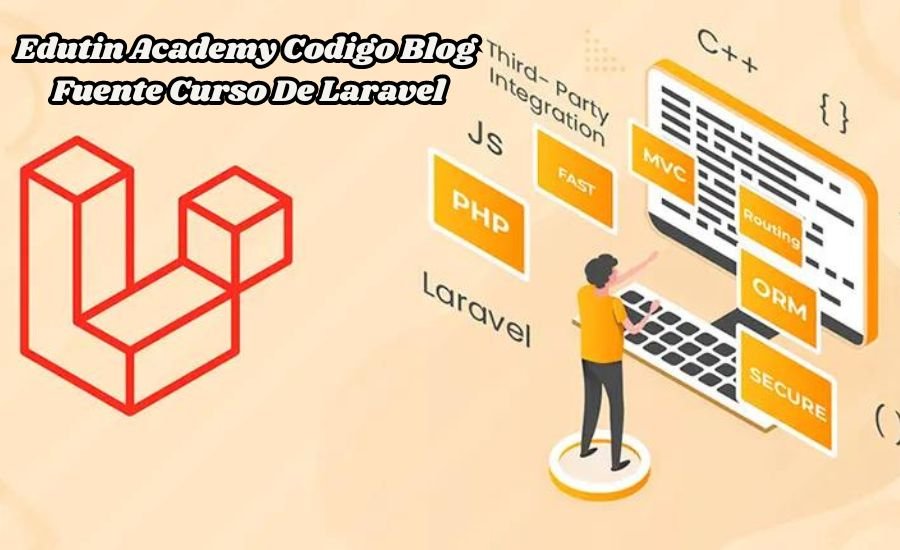Are you ready to dive into the exciting world of web development with Laravel? Edutin Academy Codigo Blog Fuente Curso de Laravel is here to guide you through every step. This course is perfect for beginners who want to learn how to create amazing websites easily and quickly. We’ll start with the basics, so you don’t need any prior experience!
In this blog, we’ll explore what makes the Edutin Academy Codigo Blog Fuente Curso de Laravel so special. Not only will you learn the technical skills needed to master Laravel, but you’ll also gain insights into best practices that will help you in real-world projects. By the end of this course, you’ll be able to build functional, responsive websites from scratch!
Introduction to Edutin Academy’s Laravel Course
Ready to start your journey with Laravel? Edutin Academy Codigo Blog Fuente Curso de Laravel is designed to introduce beginners to this powerful web development framework. Throughout this course, you’ll learn how to build and manage web applications efficiently. We’ll start with the very basics, making it easy for anyone to jump right in.
In your first classes, you’ll understand the structure of Laravel and why it’s a popular choice among developers. The Edutin Academy course covers all the essentials, providing you with the confidence to tackle bigger projects. Each lesson is packed with practical examples to help you grasp concepts quickly.
As we move forward, you’ll see how Laravel makes coding simpler and more fun. The course includes lots of exercises where you can apply what you’ve learned immediately. This hands-on approach ensures that you remember everything longer and can use your skills in real-world scenarios.
By the end of this introductory section, you’ll have a solid understanding of what Edutin Academy Codigo Blog Fuente Curso de Laravel is and how it can be used to create amazing websites. You’re not just learning to code; you’re learning to build the future of the web with Edutin Academy!
What is Laravel? A Simple Explanation for Beginners
Laravel is a web application framework that makes building complex websites easier and faster. It provides tools and resources that help developers create more robust and maintainable code. If you’re new to programming, Edutin Academy Codigo Blog Fuente Curso de Laravel helps you skip a lot of the usual hassle and jump straight to creating cool stuff.
In the Edutin Academy course, you’ll discover the key features of Laravel that set it apart from other frameworks. For instance, Laravel has built-in features for routing, sessions, and caching, which are essential for modern web applications. Each feature is explained in simple terms, so you can understand how to use them effectively.
Moreover, this course will show you how Laravel uses a Model-View-Controller (MVC) architecture. This means you can organize your code better and make it easier to manage as your website grows. You’ll learn how this structure helps in keeping your code neat and how it separates the different parts of your application.
To wrap it up, you’ll find out why so many developers love using Laravel. The course explains how Laravel’s built-in tools and community support make it an outstanding choice for new and experienced programmers alike. It’s all about making web development accessible and enjoyable, which is exactly what you’ll experience with Edutin Academy!
Setting Up Your Development Environment for Laravel
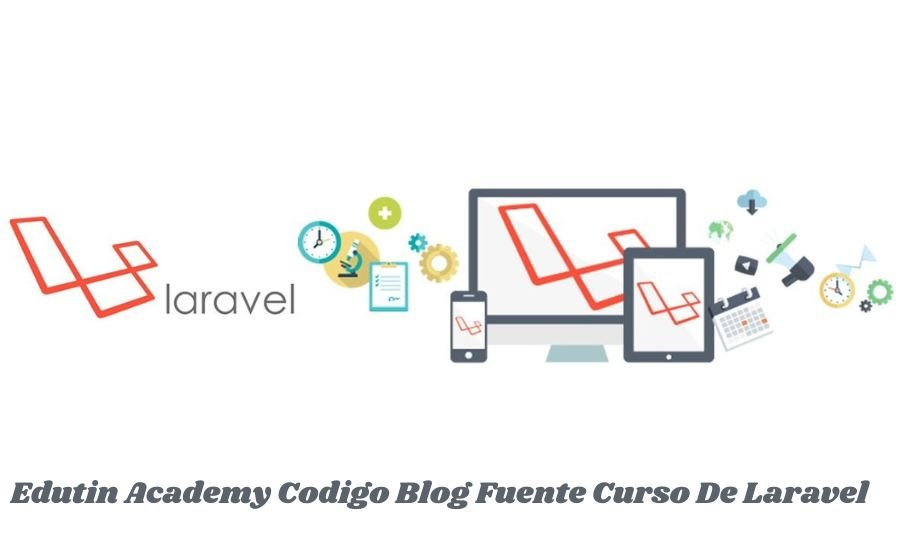
Before you start coding, it’s important to set up your development environment. This means getting your computer ready to write and test Laravel applications. Don’t worry, Edutin Academy guides you through each step, ensuring you’re all set up without any confusion.
First, we’ll go over how to install PHP, which is the language Laravel is based on. You’ll learn about different tools like Composer, which helps manage your project’s dependencies. It might sound complicated, but the course makes it very clear and simple to follow.
Next, you’ll install Laravel itself. The Edutin Academy Codigo Blog Fuente Curso de Laravel provides clear instructions and support if you get stuck. Plus, you’ll set up a local development server. This lets you see your work in action right on your own computer, just like it would appear on the internet!
Finally, you’ll learn how to keep your project organized and manage it using Git, a version control system. This is crucial for working on larger projects or with teams. By the end of this section, you’ll have a fully functional development environment where you can start building your Laravel projects confidently.
First Steps with Edutin Academy Codigo Blog Fuente Curso de Laravel
Getting Started: Begin by setting up a new Laravel project to familiarize yourself with the structure of files and directories.
File Organization: Learn where to place controllers, views, and models to maintain a clean and organized codebase.
Writing Code: Write your first lines of PHP code in Laravel to create basic web pages and understand the framework’s operations.
Database Connection: Discover how to connect your application to a database, which is crucial for storing and managing user data and content.
Running the Application: Test and run your application using Laravel’s built-in server to see your code come to life in real time.
Practical Learning: The Edutin Academy course emphasizes hands-on learning, ensuring you apply concepts directly through practical exercises.
This format breaks down the initial steps in a concise manner, suitable for easy understanding and quick reference.
You Should Know: Motorola G Play 2024 Firmware T3TF33 Download
Understanding MVC Architecture in Laravel
Edutin Academy Codigo Blog Fuente Curso de Laravel uses a design pattern called MVC, which stands for Model-View-Controller. This makes your code clean and easy to handle. Let’s break it down with Edutin Academy! The Model handles your data and business logic. It talks to your database and manages the information you store and retrieve. The View is what your users see, it’s all about the webpage design and presentation. The Controller acts as a middleman that takes requests, processes data using Models, and sends data to Views.
Every time you visit a page in a Laravel app, the controller decides what to do based on your request, the model interacts with the database if needed, and then the view presents the page. By keeping these parts separate, Laravel helps you organize your code better and makes it easier to manage as your app grows.
In the course, you’ll build sample projects to see how MVC works in action. You’ll understand how to separate your code’s concerns, which helps in maintaining and scaling your applications. Edutin Academy makes sure you get lots of practice so these concepts become second nature.
With this understanding, you can start building more complex applications that are easy to update and maintain, thanks to the solid structure Edutin Academy Codigo Blog Fuente Curso de Laravel provides. This is a key step in becoming a proficient Laravel developer.
Building Your First Web Application with Laravel
It’s time to put your skills to the test and build your first web application with Laravel! Edutin Academy Codigo Blog Fuente Curso de Laravel guides you through creating a simple yet functional application. You’ll start by planning what your app will do and sketching out the basic features.
Next, you’ll dive into coding. You’ll define routes that handle user requests, create controllers to manage the business logic, and design views to display the content. This hands-on approach helps you understand how all the pieces fit together. You’ll also learn how to add forms and accept user input, which are essential for interactive applications.
During this process, you’ll also learn about Laravel’s powerful migration system for managing your database. It helps you make changes to the database structure without losing data. By the end of this section, you’ll have a working web application that you built from scratch!
Edutin Academy Codigo Blog Fuente Curso de Laravel ensures that you feel confident with each step, providing tips and tricks along the way. This practical experience is crucial in understanding how Laravel functions in real-world projects.
Database Management Made Easy in Laravel
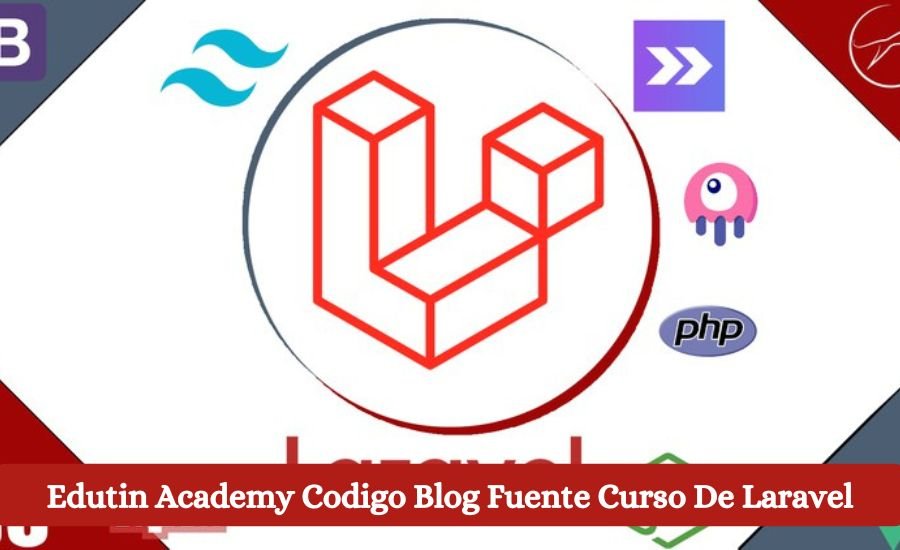
Laravel makes working with databases simple and straightforward. In this part of the Edutin Academy course, you’ll learn how to use Eloquent, Laravel’s built-in ORM (Object-Relational Mapping) that makes database interactions feel like a breeze. With Eloquent, you can write database queries using PHP rather than SQL, which is more intuitive and less error-prone.
You’ll start by setting up your database and creating tables using migrations, which are like version control for your database. This allows you to easily modify and share the database schema. Then, you’ll learn how to insert, update, and delete records with Eloquent models. Each model represents a table in your database, allowing you to interact with that table as if it were an object.
Further, you’ll explore relationships between tables, such as one-to-many and many-to-many. Understanding these relationships will help you build more complex and dynamic applications. Edutin Academy provides plenty of examples to make sure these concepts are clear and digestible.
By mastering database management in Edutin Academy Codigo Blog Fuente Curso de Laravel, you enhance your ability to develop robust applications that can handle large amounts of data efficiently. This skill is invaluable as you progress in your web development career.
Effective Debugging Techniques in Laravel Projects
Every developer needs to know how to find and fix bugs, and Laravel provides tools that make this easier. Edutin Academy Codigo Blog Fuente Curso de Laravel covers debugging techniques that help you quickly identify where things are going wrong. You’ll learn about Laravel’s built-in debugging tool, Laravel Telescope, which provides insights into requests, exceptions, database queries, and more.
You’ll practice reading stack traces, which are reports that show where errors occur in your code. Understanding these can save you lots of time when you’re trying to figure out why something isn’t working. You’ll also learn about logging in Laravel, which helps you keep records of what your application is doing or when errors occur.
Moreover, the course will cover common scenarios where errors might pop up and how to fix them. You’ll get tips on configuring your environment to make debugging easier and less disruptive to your workflow.
With these skills, you’ll be able to maintain your applications more effectively, ensuring they run smoothly for users. Debugging is a critical skill, and Edutin Academy Codigo Blog Fuente Curso de Laravel makes sure you’re well-equipped to tackle these challenges.
How to Add Authentication to Your Laravel Site
Security is crucial for any web application, and Laravel makes it easy to implement authentication. This means making sure only authorized users can access certain parts of your application. Edutin Academy Codigo Blog Fuente Curso de Laravel walks you through Laravel’s built-in authentication system, which you can set up with just a few commands.
You’ll learn how to create registration and login forms, manage user sessions, and secure user passwords. The course also covers more advanced topics, like social media authentication, which allows users to log in using their Facebook or Google accounts.
By adding these features, you not only make your site more secure but also improve the user experience by making it easy for users to access their accounts. Edutin Academy provides all the code and explanations you need to implement these features effectively.
This part of the course is especially important if you plan to build applications that require user registration and login. With Laravel’s tools and Edutin Academy’s guidance, you’ll be able to add these features with confidence.
Personalizing Your Website with Laravel’s Blade Templating
Laravel’s Blade templating engine allows you to create dynamic HTML templates with minimal fuss. In this section of Edutin Academy Codigo Blog Fuente Curso de Laravel, you’ll explore how Blade helps you easily manage and personalize your website’s layout. Blade templates are intuitive and interactive, letting you insert PHP code directly into your HTML which makes your web pages more dynamic.
You’ll learn how to extend layouts and include subviews, which helps in maintaining a clean and modular structure for your views. You’ll also discover how to use Blade directives, conditional statements, and loops to generate content dynamically based on user data or database content.
Additionally, the course will show you how to pass data to your views from your controllers, a common practice in web development. This ensures that your web pages are tailored to the needs and preferences of your users.
With Blade, you can keep your code elegant and focused while enhancing the functionality and user-friendliness of your website. Edutin Academy Codigo Blog Fuente Curso de Laravel makes sure you have all the tools to make the most of Laravel’s powerful templating features.
Integrating APIs in Laravel for Dynamic Content
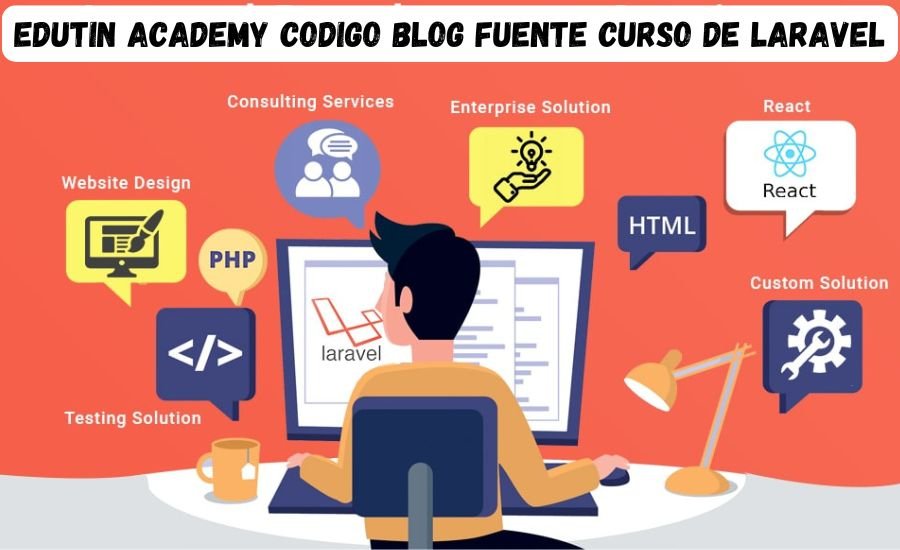
APIs (Application Programming Interfaces) allow your Laravel application to communicate with other applications or services. Edutin Academy Codigo Blog Fuente Curso de Laravel teaches you how to integrate external APIs to bring dynamic content into your Laravel projects. This could be anything from displaying weather information to handling payments with PayPal.
You’ll start by learning how to send requests to APIs and process the responses. The course covers how to use Laravel’s HTTP client to make this process smooth and efficient. You’ll practice with popular APIs like Twitter and Google Maps to see real-world examples of API integration.
This skill is essential for modern web developers, as APIs can greatly extend the functionality of your applications. Whether you’re adding simple features or building complex integrations, the ability to work with APIs is invaluable.
Edutin Academy Codigo Blog Fuente Curso de Laravel ensures that you understand the best practices for securing your API interactions and managing data efficiently. By the end of this section, you’ll be able to enhance your applications with powerful features from the outside world.
Testing Your Laravel Applications for Better Reliability
Testing is an important part of developing reliable applications. Laravel provides built-in support for testing with PHP Unit, one of the most popular testing frameworks. Edutin Academy Codigo Blog Fuente Curso de Laravel guides you through writing different types of tests to ensure your application works as expected.
You’ll learn how to write unit tests, which check small parts of your code, and feature tests, which test larger parts of your application, like user interactions. The course also covers test-driven development (TDD), a methodology that encourages you to write your tests before writing the actual code.
By implementing these practices, you ensure that your applications are robust and less likely to break when you make changes or add new features. Testing might seem daunting at first, but Edutin Academy Codigo Blog Fuente Curso de Laravel makes it accessible and practical.
This section is crucial for becoming a proficient developer. Well-tested applications are easier to maintain and update, and they provide a better experience for users. With Laravel’s testing tools and Edutin Academy’s instructions, you’ll be able to build more dependable applications.
Deploying Your Laravel Application to the Web
Once your application is ready, the next step is to make it available to the world. Deployment involves transferring your local code and data to a live server. Edutin Academy Codigo Blog Fuente Curso de Laravel covers everything you need to know about deploying your Laravel applications.
You’ll explore different deployment platforms and learn how to choose the right one for your project. The course covers common issues that might arise during deployment and how to solve them, ensuring your launch goes smoothly.
Additionally, you’ll learn how to use version control systems like Git to manage your code changes and collaborate with others. You’ll also find out how to keep your application secure and performant once it’s live.
Deploying your application is an exciting step, and Edutin Academy ensures you’re well-prepared for it. With the right tools and knowledge, you can share your Laravel projects with anyone, anywhere.
Maintaining and Updating Your Laravel Website
After your application is live, the work isn’t over. Maintaining and updating your site is crucial for keeping it secure and relevant. Edutin Academy Codigo Blog Fuente Curso de Laravel teaches you how to manage your Laravel application post-deployment effectively.
You’ll learn how to monitor your application’s performance, understand user behavior, and respond to feedback. The course also covers security updates, which are crucial to protect your site from threats.
Additionally, you’ll discover how to add new features and refine existing ones without disrupting your live application. Regular updates keep your users engaged and ensure your site grows with your audience.
With Edutin Academy, you’ll gain the skills to keep your website running smoothly and efficiently. Effective maintenance is key to a successful online presence, and this course equips you with everything you need to excel.
Tips and Tricks from Edutin Academy’s Laravel Experts
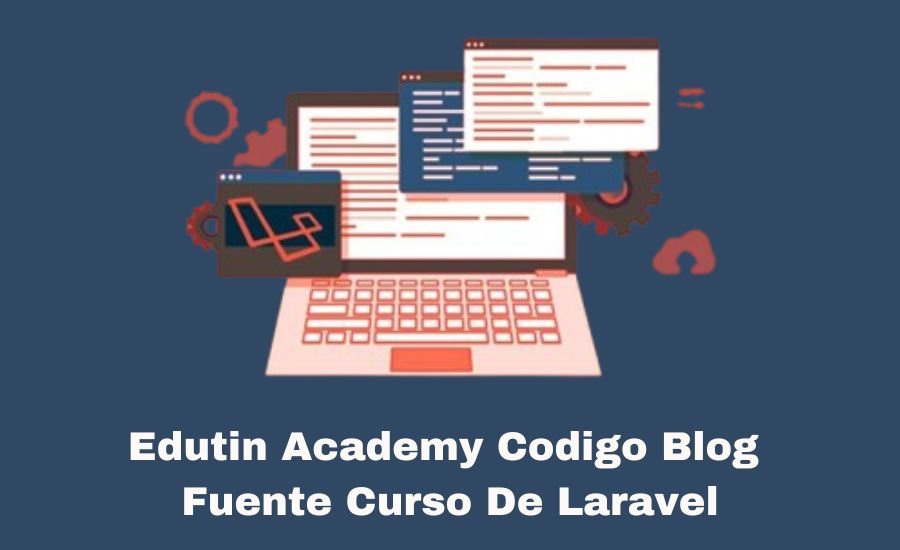
Here are some tips and tricks from Edutin Academy’s Laravel experts to enhance your Laravel development skills:
Embrace Artisan: Utilize Laravel’s built-in command-line tool, Artisan, for automating repetitive tasks and improving efficiency in your development process.
Leverage Eloquent: Get the most out of Laravel’s ORM, Eloquent, by exploring its advanced features like eager loading to optimize your database queries.
Use Middleware: Implement middleware for handling HTTP requests efficiently and securing your application by filtering requests based on various conditions.
Take Advantage of Blade: Maximize the power of Laravel’s Blade templating engine to manage dynamic content seamlessly and keep your code clean.
Regularly Update: Always keep your Laravel installation updated to benefit from the latest features, security patches, and improvements.
Explore Packages: Extend Laravel’s functionality by integrating packages available from other developers, which can add complex features without heavy lifting.
Where to Go Next: Advancing Beyond the Basics in Laravel
As you wrap up the Edutin Academy Codigo Blog Fuente Curso de Laravel, you might wonder what’s next. This final section helps you plan your future learning path. Whether you’re interested in advanced Laravel features, like queues and jobs, or you want to explore other related technologies, the course provides guidance on continuing your education.
You’ll learn about resources for advanced Laravel topics, communities to join, books to read, and additional courses to take. Expanding your knowledge will help you tackle more complex projects and increase your value as a developer.
Edutin Academy encourages lifelong learning and provides you with the tools to keep growing professionally. With a solid foundation in Laravel, the possibilities are endless. This course sets you on a path to becoming an expert developer, ready to build innovative and exciting web applications.
Conclusion
As we wrap up our journey through the Edutin Academy Codigo Blog Fuente Curso de Laravel, we’ve learned so much together! From setting up our development environment and mastering Laravel’s MVC architecture, to deploying our very own applications on the web, this course has set us up for success. Remember, each step you’ve taken in this course has built a strong foundation for your future projects. Laravel is a tool that opens many doors, and now you have the key!
Keep practicing what you’ve learned, and don’t be afraid to explore more challenging projects. The world of web development is always evolving, and there’s always something new to learn. Edutin Academy is here to support you on this exciting journey. So keep coding, stay curious, and build amazing things with your new skills. You’re well on your way to becoming a great developer!
More Details: TrendBlendr
Frequently Asked Questions
Q: What is Laravel?
A: Laravel is a PHP framework for web development, known for its elegant syntax and robust features.
Q: Is Laravel good for beginners?
A: Yes, Laravel is beginner-friendly, offering straightforward ways to handle complex web development tasks.
Q: What does MVC mean in Laravel?
A: MVC stands for Model-View-Controller, a structure that organizes code in a logical, manageable way.
Q: How does Laravel interact with databases?
A: Laravel uses Eloquent ORM, which simplifies database interactions using PHP instead of SQL.
Q: What security features does Laravel offer?
A: Laravel provides security against common threats like SQL injection, CSRF, and XSS.
Q: What support does Edutin Academy offer post-course?
A: Edutin Academy provides additional resources, community access, and project guidance after the course.
